Updated pi0 longitudinal background asymmetries
The background asymmetry estimate has been 0.000 +/- 0.100 was used. This was chosen as an very conservative number based on the studies in this blog and this blog last December, which most likely did not use all the available runs. Due to the limited statistics, a fair amount of the observed fluctation seems due to statistics, and keeping with 0 +/- 0.1 would lead to the dominant systematic uncertainty. Also, as some aspects of the analysis may have been updated since then, it is worth revisiting. Since it was already decided a single value for all pT is sufficiently accurate, given the statistical fluctations, it is fair to consider the value of A_LL integrated over all pT. The following show A_LL vs pT for each of three mass bins (0-0.1 GeV, 0.1-0.2 GeV, and 0.2-0.3 GeV) and the results for each mass bin are fit to a constant.
.png)
.png)
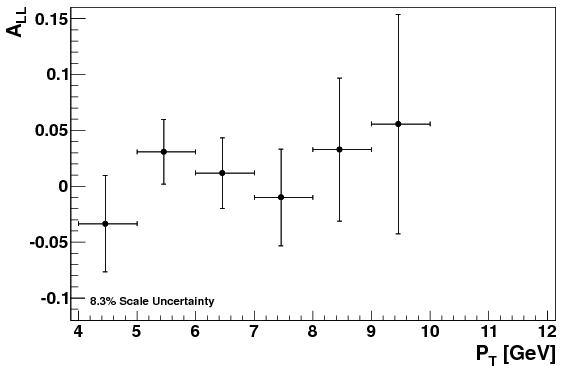
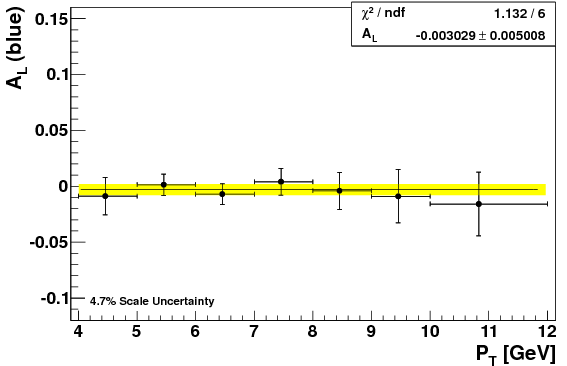
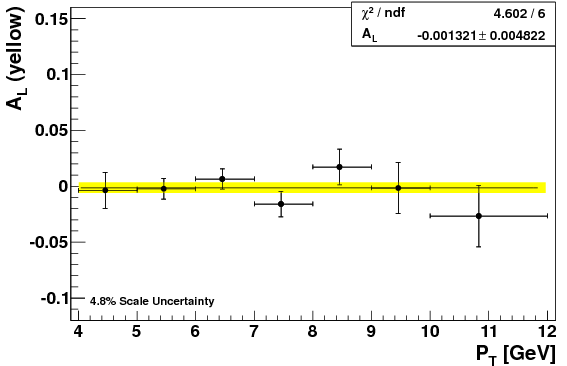
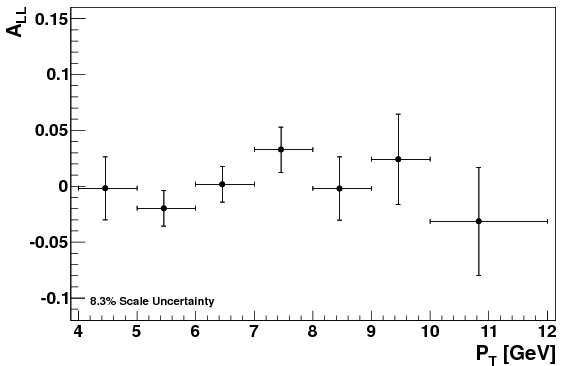
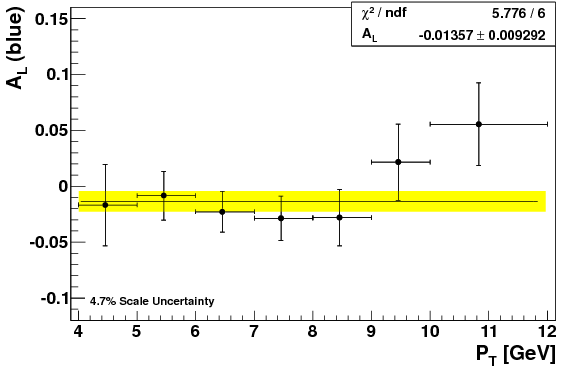
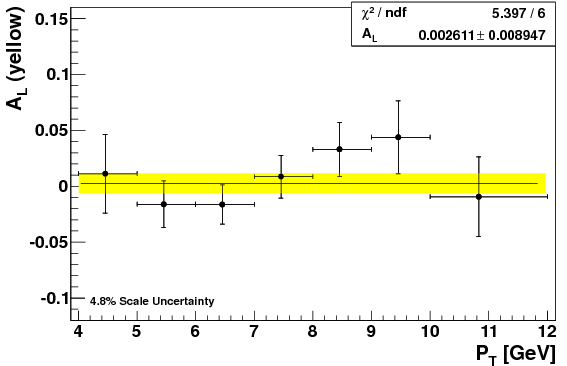
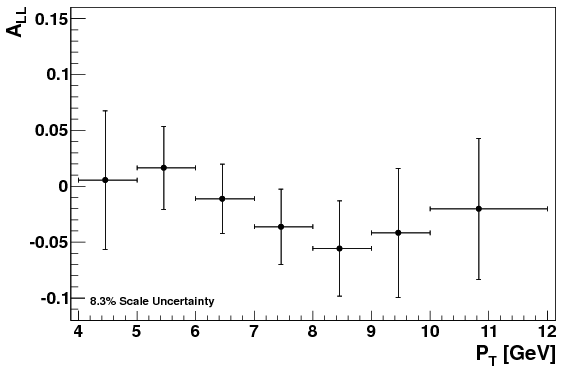
Mass Bin 1: 0-0.1 GeV
.png)
.png)

Mass Bin 2: 0.1-0.2 GeV



Mass Bin 3: 0.2-0.3 GeV



Mass Bin 4: 0.3-0.4 GeV
Conclusions
The fits to a constant for A_L blue are (each row 1-3 correspond to mass bins 1-3)Fit result: 0.015 +/- 0.010 chi^2/ndf = 4.4884/6 Fit result: -0.003 +/- 0.005 chi^2/ndf = 1.13235/6 Fit result: -0.014 +/- 0.009 chi^2/ndf = 5.77578/6The fits to a constant for A_L yellow are
Fit result: -0.002 +/- 0.009 chi^2/ndf = 2.34014/6 Fit result: -0.001 +/- 0.005 chi^2/ndf = 4.60174/6 Fit result: 0.003 +/- 0.009 chi^2/ndf = 5.39672/6The fits to a constant for A_LL are
Fit result: 0.007 +/- 0.016 chi^2/ndf = 5.38901/6 Fit result: 0.001 +/- 0.009 chi^2/ndf = 4.92826/6 Fit result: -0.020 +/- 0.016 chi^2/ndf = 2.29198/6The chi^2/ndf are very reasonable. We taking the estimate of the background to be the average of the fit result for the 1st and 3rd mass bins (the bins immediately adjacent to the signal region mass bin) and set the uncertainty to the larger of either (1) the propagated uncertainties from the fits or (2) half the difference in the central values between the 1st and 3rd bin.
A_L blue background asymmetry: 0.001 +/- 0.014 A_L yellow background asymmetry: 0.000 +/- 0.006 A_LL background asymmetry: -0.006 +/- 0.013The significant decrease in uncertainty from last December's estimate is due to the increased number of runs used for this study and by using the average of the fits from the two mass regions rather than just judging a number by eye.
Groups:
- sgliske's blog
- Login or register to post comments
